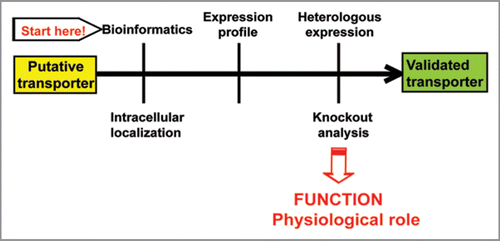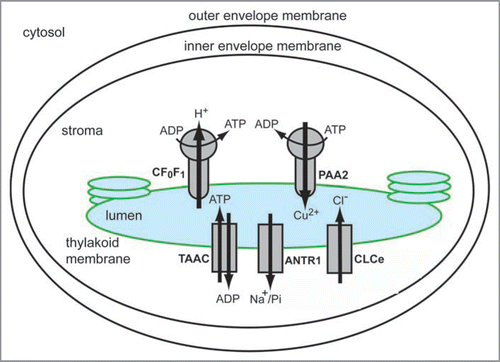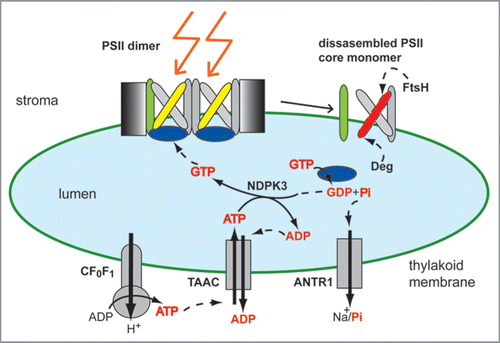Figures & data
Figure 1 Flow scheme for experimental validation of putative transporters using a functional genomics approach in Arabidopsis thaliana.

Figure 2 Current picture of thylakoid solute transporters from Arabidopsis thaliana. Chloroplasts are structurally organized in three membrane compartments (outer envelope, inner envelope and thylakoid membrane), and two soluble compartments (stroma and thylakoid lumen). The diagram shows the following transporters, that have been localized to the thylakoid membrane, and functionally characterized: the H+-translocating ATP synthase CF0F1, the Cu2+-transporting P-type ATPase PAA2, the thylakoid ATP/ADP carrier TAAC, the Na+-dependent Pi transporter ANTR1, and the chloride channel CLCe.

Figure 3 Schematic model of ATP transport and GTP-mediated signaling during high light stress. The active photosystem II (PSII ) is a multisubunit and dimeric complex, containing an intact reaction center D1 protein (yellow). As a result of high-light-induced inactivation, the D1 protein is oxidatively damaged (red), and needs to be replaced. The ATP-synthase CF0F1 supplies ATP in the stroma, from where it is translocated by the thylakoid ATP/ADP carrier (TAAC) into the lumen in exchange for ADP. The lumenal nucleoside diphosphate kinase NDPK3 converts ATP to GTP, which is subsequently bound and hydrolyzed by the PSII extrinsic subunit PsbO (blue). This leads to PsbO dissociation, partial disassembly of PSII complex (CP43 subunit shown in green), and D1 proteolysis by Deg and FtsH proteases in a highly controlled manner. The resulting phosphate (Pi) is exported back to the stroma by the Na+- dependent Pi transporter (ANTR1). The various nucleotides and Pi are highlighted as red text.

Table 1 Thylakoid solute transporters from Arabidopsis thaliana